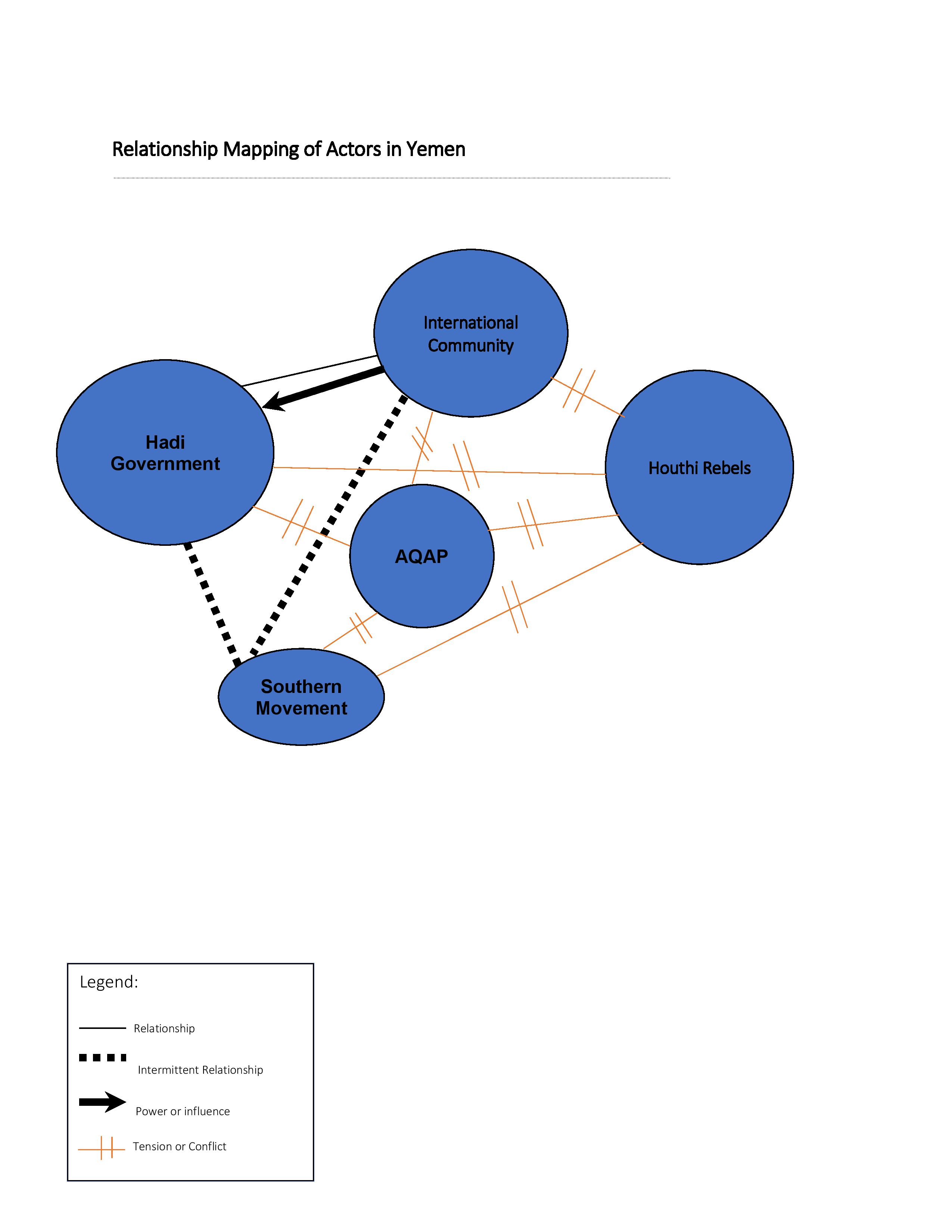Yemen is overshadowed by an ongoing civil war that triggered the world’s worst humanitarian crisis. The country’s intricate status is in consistent deterioration despite Stockholm’s promising step-forward. The contested parties are still engaged in heavy battles with no end in sight. Hence, this piece is part of BIC’s monthly thematics that is dedicated to providing a general overview of the main parties (local) operating in Yemen.
Yemen, Arab’s poorest country and World’s worst humanitarian crisis, is in an on-going full scale civil war for almost 4 years. A conflict that exacerbated past grievances and fractured the societal texture into sectarian pieces is witnessing a sharp increase in the country's death toll. In addition to that, reports discuss how humanitarian assistance is on the verge of 'rotting' as a result of the limited means of access and distribution. These factors, including many others, failed to galvanize the United Nations into taking proper action, except for replacing its special envoy.
On ground, the adversaries are in a stalemate in which each side is claiming alleged advancements with no end in sight. In addition, three months have passed since the contested parties formed the Redeployment Coordination Committee RCC (established to monitor the Stockholm Agreement), with documented violations occurring on regular bases.
The Stockholm Agreement is perhaps a promising step forward, as it managed to bring the two parties to negotiate and agree on forming a joint-body (RCC) with international cooperation[1]. However, its effectiveness is subject to debate. First, not only the agreement is constantly violated[2] but also it only addressed parts of the conflict. Hadi’s government and the Houthis are still engaged in heavy armed battles in Yemen’s Northern periphery[3], hindering the agreement’s groundwork. Second, the agreement lacks political inclusivity as it failed to include other influential parties, such as the Southern Movement (Hirak). This leads to an overarching misrepresentation of public opinion that could be used as an instrument by such parties to fuel the already existing grievances of political marginalization.
This piece is part of BIC’s Monthly Thematics that aims to provide the reader with a brief background on the main parties operating on the local level in Yemen. The Brussels International Center BIC advocates for a pragmatic, overarching approach that addresses both past grievances as well as current challenges. As such, this piece paves a way for a series of articles and policy reports that discuss Yemen’s situation into more details. Thus, along with the brief background, this piece visualizes the nature of ties between Yemen’s local parties and the international community.
Overview of Actors
|
Parties |
Issues |
Interests/Needs |
Fears |
Means |
Potential Strategies |
|
Hadi Government |
-Fractured authority -Failure of National Dialogue Conference -Houthi Insurgency -Ouster from power
|
-National dialogue -Implementing Security Council Resolutions 2201&2204 |
-Perpetuating the Status quo |
-Request military assistance -Support local tribes and militias |
-Engage in peace talks -military Solution |
|
Houthi Rebels |
-Political marginalization -2011 Gulf Cooperation Council Framework |
-Perpetuating the status quo
|
-International position -Lack of legitimacy -Loss of territory |
-Establish the Supreme Political Council -Establish tactical alliances -Conflate Sunni groups |
-Engage in peace talks -Military solution |
|
Southern Movement (Hirak) |
-Southern marginalization |
-Power sharing between North and South Yemen -Request equality under the law |
-Continued marginalization -Refused demands |
-Establish the Southern Transitional Council
|
-Call for secession
|
|
AQAP |
-US Counterterrorism campaign |
-Ideological -Jihad |
-Expansion of counterterrorism campaign -Loss of territory
|
-Call for Sunni unity -Exploit Houthi’s belligerence against Sunni tribes -Exploit power vacuum |
-Control fragmented territory -Provide services for locals |

Hadi Government
Hadi government is Yemen’s internationally recognized government since the conclusion of the GCC Framework in 2012. Hadi called for a national dialogue that would include all political parties and movements in the country to delineate Yemen’s political roadmap. However, his initiative for peace and stability was contested for two main reasons. First, his authority was highly challenged because the GCC Framework granted Ali Abdullah Saleh amnesty (in return for his compliance with the framework) while he remained president of the General People’s Congress that participated in the national dialogue. This triggered unrest and a lack of trust in many areas in the country, particularly amongst the Houthis and the Hirak. Second, Ali Abdullah Saleh’s relatives remained in control of sensitive positions in the army. His son, Ahmed Ali Saleh, maintained his grasp on the Republican Guards while his cousin, Ali Mohsin, remained the commander of the 1st armored division. Later, the situation was further exacerbated after the Houthis formed an alliance with Ali Abdullah Saleh and executed an insurgency that granted them control over Sana’a, ousting Hadi from power. Hence, as mentioned in the figure above, this galvanized Hadi to request military assistance from Saudi Arabia to regain control over the country and maintain Yemen’s territorial integrity. Today, Hadi’s government mainly operates from the South of Yemen.
Houthi Rebels
Houthis have a long resume of political and military interactions with the government of Yemen. The movement initially started as a theological movement advocating for peace. However, the Houthis later adopted some belligerent stances against the government, galvanizing Ali Abdullah Saleh to crackdown on their areas in the North. Notably, the Houthis denounced the GCC Framework as it granted Saleh amnesty. They repudiated Hadi’s call for national dialogue and called for its boycotting. They later reluctantly joined the dialogue but left it shortly after two of its members were killed in intriguing events. As mentioned in the figure above, the Houthis exploited the country’s political fragility, formed an alliance with Ali Abdullah Saleh and conducted an insurgency, thus becoming the de facto governor of Sana’a and vast areas of land in the North. The Houthis actions triggered a regional and international response to reclaim the Houthi-held areas. Today, the Houthis govern their areas through the Supreme Political Council (political body) with alleged support from Iran (Tehran repudiated such claims).
Southern Movement (Hirak)
Hirak is a political movement that was built around the perceptive of Southern marginalization in 2007. The movement initially complained the forced retirement of Southern security officials along with Ali Abdullah Saleh’s corruption and economic mismanagement, thus demanding equal treatment and power sharing between the North and South. However, by late 2008, some protestors started calling for South Yemen’s independence. Hirak soon took on the shape of a secessionist movement with prominent figures promising to lead a peaceful struggle to “reclaim the occupied South”. Today, the movement is operating through its Southern Transitional Council (political wing). Hirak maintains good ties with Hadi’s government and promotes mending ties with local elites, regional stakeholders and international powers.
Al-Qaeda in the Arabian Peninsula AQAP
AQAP is the unified banner under which Al-Qaeda’s militants from Saudi Arabia and Yemen are operating. Yemen’s economic stagnation and the population’s poor education serve as a fertile soil for AQ’s entrenchment. AQ exploited the power vacuum caused by the withdrawal of Yemeni troops, particularly Ahmed Ali Saleh’s Republican Guards, from Abyan to Sana’a in the context of the country’s upheavals in 2011. Al-Qaeda’s service provisions to the local population catalyzed its reputation. It provided the locals with municipal services that vary from water, electricity, and compensations for families that were influenced by the US airstrikes. AQ was soon driven out of Abyan as a result of the combined efforts of Yemen’s security services and the local militias. However, it remained an influential actor through adopting attacks perpetrated throughout the country. Furthermore, Al-Qaeda took advantage of the Houthi’s belligerence against Northern Sunni tribes and introduced itself as a guardian for the Sunnis, declaring war against the Houthis. AQ’s territorial gains were again present after taking control in Mukalla. AQ, before its ouster by the UAE, consolidated its presence through establishing a political body, Ansar al-Sharia (separate from the military wing), mending ties with the locals, and providing municipal services. However, as mentioned in the figure above, AQAP’s territorial control remains fragmented.

